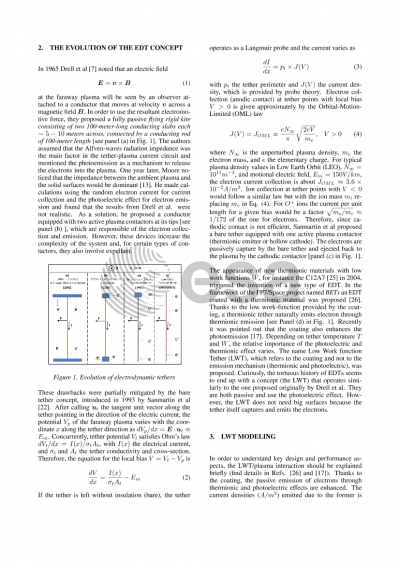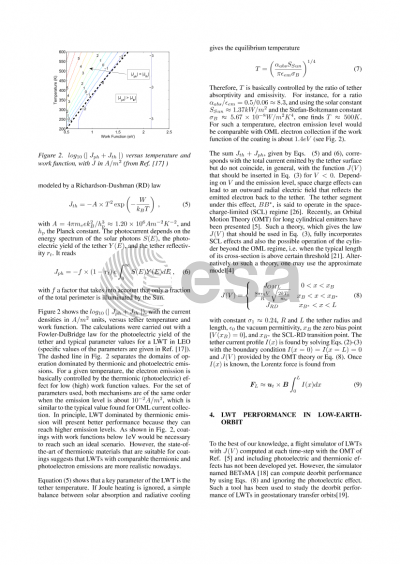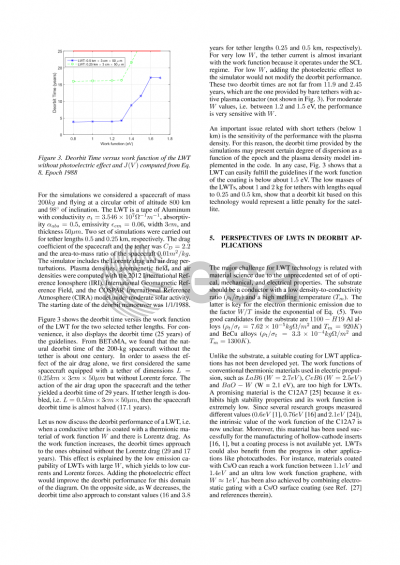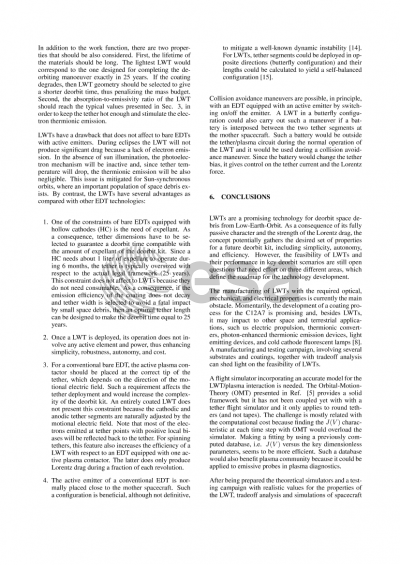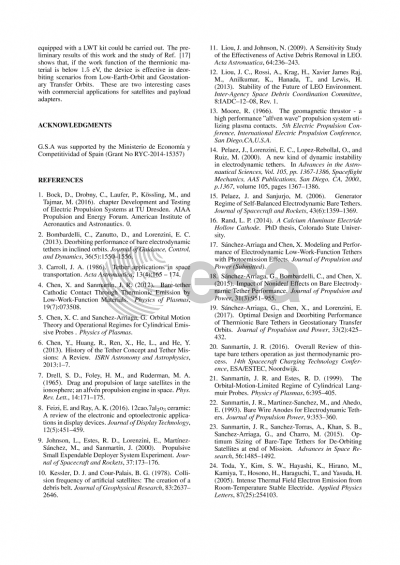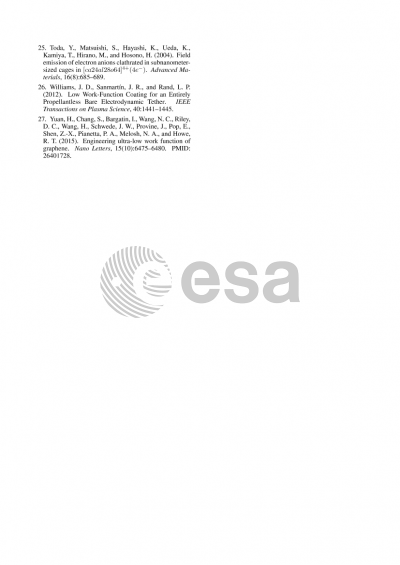Document details

Abstract
Entirely propellantless bare electrodynamic tethers, i.e. long conductors coated with low work-function materials, have been proposed recently to deorbit space debris passively and without using consumables. The coating enables natural thermionic emission of electrons within the cathodic tether segment and avoids the need of active hollow cathodes. Therefore, a thermionic tether is similar to a drag augmentation device, except that, instead of the weak air drag, the tether uses the magnetic drag, which is stronger and reduces the area-time product between one and two orders of magnitude. However, depending on the work function W of the coating and the tether temperature T, photoelectron emission can be also relevant and may improve the cathodic contact with the ambien plasma. Using a typical solar photon spectrum and a Fowler-DuBridge law for the photoelectron yield of the coating, thermionic and photoelectric dominated Low Work-function Tethers (LWT) are organized within the W-T plane. Recent advances on emissive Langmuir probe theory are applied to the charge exchange modeling between the tether and the ambient plasma. The analysis is used to find the average current along the tether for typical Low-Earth-Orbit scenarios. Orbital-Motion Theory is used to model all the plasma and emitted particles and both thermionic and photoelectric emission are considered in the cathodic tether segment. Key tether design aspects, including thermal, electrical, and mechanical considerations, are analysed and the required theoretical and experimental activities for the development of the concept are identified. A roadmap, which takes into account the state-of-the-art of extra low work function thermionic materials and tether technology in Europe, is proposed.
Preview

